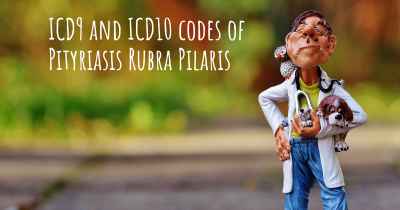Which advice would you give to someone who has just been diagnosed with Pityriasis Rubra Pilaris?
See some advice from people with experience in Pityriasis Rubra Pilaris to people who have just been diagnosed with Pityriasis Rubra Pilaris

Pityriasis Rubra Pilaris (PRP) is a rare and chronic skin disorder characterized by reddish-orange scaly patches, rough bumps, and thickened skin. Being diagnosed with PRP can be overwhelming and may raise many questions and concerns. While I am not a medical professional, I can offer some general advice and suggestions to help you navigate this condition.
1. Educate Yourself
Take the time to learn about PRP and its symptoms, causes, and treatment options. Understanding the condition will empower you to make informed decisions about your health and treatment plan. Consult reputable medical websites, books, or seek guidance from your dermatologist.
2. Find a Knowledgeable Dermatologist
Seek out a dermatologist who specializes in treating PRP or has experience with rare skin disorders. A knowledgeable dermatologist will be better equipped to provide accurate diagnosis, monitor your progress, and suggest appropriate treatment options.
3. Follow Your Treatment Plan
Stick to the treatment plan prescribed by your dermatologist. This may include topical creams, oral medications, phototherapy, or a combination of treatments. Consistency and adherence to the prescribed regimen are crucial for managing PRP effectively.
4. Communicate Openly with Your Dermatologist
Establish open and honest communication with your dermatologist. Share any concerns, changes in symptoms, or side effects you may experience. Regular check-ups will allow your dermatologist to monitor your progress and make adjustments to your treatment plan if necessary.
5. Manage Symptoms and Discomfort
PRP can cause itching, dryness, and discomfort. To alleviate these symptoms, consider:
- Using gentle, fragrance-free moisturizers to keep your skin hydrated.
- Avoiding harsh soaps, hot water, and long showers, as they can worsen dryness.
- Wearing loose-fitting, breathable clothing to minimize irritation.
- Using over-the-counter hydrocortisone creams or antihistamines under your dermatologist's guidance.
6. Seek Emotional Support
Living with a chronic skin condition like PRP can be emotionally challenging. Reach out to friends, family, or support groups to share your feelings and experiences. Connecting with others who have similar conditions can provide valuable emotional support and coping strategies.
7. Protect Your Skin
Shield your skin from excessive sun exposure by wearing protective clothing, using broad-spectrum sunscreen, and avoiding peak sun hours. Sunburns can exacerbate PRP symptoms and increase skin sensitivity.
8. Maintain a Healthy Lifestyle
Adopting a healthy lifestyle can positively impact your overall well-being and potentially improve PRP symptoms. Consider:
- Eating a balanced diet rich in fruits, vegetables, and whole grains.
- Engaging in regular exercise to boost your immune system and reduce stress.
- Getting sufficient sleep to support your body's healing processes.
- Reducing stress through relaxation techniques like meditation or yoga.
9. Stay Positive and Patient
Living with PRP can be challenging, but maintaining a positive mindset and being patient with your treatment progress is essential. Remember that everyone's journey with PRP is unique, and it may take time to find the most effective treatment approach for you.
10. Stay Informed about Research and Clinical Trials
Stay updated on the latest research and clinical trials related to PRP. New treatment options and advancements may emerge, offering hope for improved management and potential future therapies.
Disclaimer: The information provided here is for general informational purposes only and should not be considered medical advice. Always consult with a qualified healthcare professional for personalized guidance and treatment options based on your specific condition.








